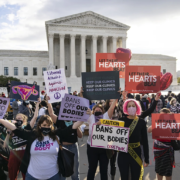Nothing frivolous about it: Trial lawyers who hold doctors and other providers accountable when they injure or kill patients play a major role in improving America’s health care system

Over the years I’ve developed a relatively thick skin—something that is basically a job requirement for criminal defense and personal injury attorneys and chairs of political parties. I’ve lost track of how many times I’ve been called an “ambulance chaser,” “shyster,” “commie,” “hack,” yelled at for getting criminals off, and been told the “What do you call 99 lawyers at the bottom of the sea?” joke, 99,000 times. (The answer: a good start.)
For the most part, this stuff just rolls off my back. But there is one two-word phrase that simply sends me over the edge: “frivolous lawsuit” as in “If you ambulance chasers would stop filing frivolous lawsuits health care costs wouldn’t be so high. Thanks to you shysters medical malpractice insurance premiums are skyrocketing. You’re forcing doctors to practice expensive defensive medicine and driving them out of the profession.”
Aside from the fact that my firm has never filed a lawsuit that in any way comports with the definition of frivolous: i.e. not having any serious purpose or value, the medical malpractice cases trial lawyers like us bring play an important role in preventing doctors, other health care providers, and hospitals from killing and maiming patients.
And believe me, there is nothing at all frivolous about that when you consider that a John Hopkins University School of Medicine study found that medical errors and malpractice could feasibly be the third leading cause of death in the U.S. killing between 250,000 and 440,000 Americans each year. Imagine how much higher the death toll would be if lawyers like us were not holding medical professionals accountable.
Those statistics in and of themselves are troubling, but when you put a face, a name, and an actual case to the numbers they become downright heart wrenching. For example, last year, Brian Kopp who heads BKM’s complex litigation practice group and is one of the nation’s preeminent medical malpractice and wrongful death attorneys, represented the family of Megan Clay, a perfectly healthy 20-year-old who died after having what should have been a routine tonsillectomy on March 29, 2018.
More than four years after Megan passed away, her case went to trial and a Common Pleas Court jury awarded her family significant damages. After the verdict was returned Brian offered this comment: “I am the father of seven daughters and have one granddaughter and I cannot imagine for a moment what it is like to walk in the shoes of Jay Clay and his family. Jay, his wife Christine, and Megan’s brothers and sister have suffered a devastating loss. It is always humbling to represent a family that has suffered as they have.”
Despite all the data about the number and consequences of medical errors and tragic stories Megan Clay’s, the insurance industry, doctors, and business groups continue to use frivolous lawsuits as a stalking horse for their attempts to enact tort “reform” laws that severely limit the ability of victims and families to seek justice and just compensation—even though fewer than 2% of those impacted by malpractice ever file suit.
I mention all of this because the Center for Justice and Democracy at New York Law School recently issued a comprehensive briefing book “Medical Malpractice by the Numbers” that refutes the misinformation regularly dispensed about the impact lawsuits have on the practice of medicine. Here are few relevant facts:
So-called “defensive medicine” is a myth. Researchers found that physicians order tests because they are focused on patient safety not malpractice risks, or “more focused on not harming patients than on not getting sued.”
Medical malpractice premiums are rising even though claims are dropping. More than 6 in 10 medical groups report their doctors’ malpractice premiums have increased since 2020 even though overall claims throughout the United States have dropped.
Caps on damages harm patients while doing nothing to stop insurance premium price-gouging. Researchers found that while caps drive down insurer costs, premiums do not fall and that by lowering the risk of suit for malpractice … imposing caps is associated with a 16% increase in adverse events.
The United States health care system is severely failing women. Among women of reproductive age in high-income countries, rates of death from avoidable causes, including pregnancy-related complications, are highest in the United States.
The Briefing Book is bursting with facts about they intersection of the legal and medical professions and, take if from your favorite ambulance chaser, is well worth a look.





 Abortion rights supporters and anti-abortion demonstrators rally outside the U.S. Supreme Court on Nov. 1, 2021. | Drew Angerer/Getty Images
Abortion rights supporters and anti-abortion demonstrators rally outside the U.S. Supreme Court on Nov. 1, 2021. | Drew Angerer/Getty Images 

